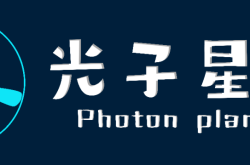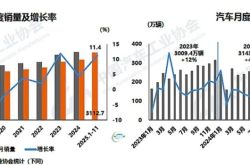Enterprises Roll Out 20% Self-Subsidies to Complement National Home Appliance Subsidy Scheme
![]() 09/10 2025
09/10 2025
![]() 583
583

Recently, a host of top-tier home appliance enterprises have unveiled their '20% self-subsidy' initiatives in succession. These are designed to bridge the gap left by the 20% national subsidy for home appliances in numerous regions, while also equipping online and offline retailers with additional retail tools and resources. In the face of the prevailing market conditions, collaboration among manufacturers has become imperative for survival.
Authored by Ning Yan
Since July of this year, particularly after the challenges encountered in August and as the market competition intensified in September, the home appliance sector has witnessed a trend. Following Midea and Haier, firms such as Gree, Hisense, TCL, and others have rolled out 20% enterprise self-subsidies. This is primarily done in partnership with entities like UnionPay across various regions, aiming to amplify the reach, impact, and trustworthiness of their promotional campaigns.
Against the backdrop of the 20% national subsidy for home appliances, why are home appliance firms introducing fresh 20% self-subsidy policies in the latter half of this year? Is the market competition heating up?
In truth, since the latter half of 2025, the national subsidy policies for home appliances in numerous regions have become largely out of reach due to overwhelming demand. However, since the overall national subsidy policy has not officially concluded, consumers still anticipate its continuation, albeit with coupons that are hard to come by. Consequently, they are hesitant to make home appliance purchases, preferring to wait until they can secure a coupon.
This scenario has directly precipitated a nationwide slump in home appliance sales, both online and offline, with declines typically ranging from 30% to 50%, and some even more severe. Ultimately, this has sparked widespread anxiety and concern across the market.
To invigorate sales and restore market and merchant confidence, since August, and especially with the commencement of a new round of super promotion seasons in September, the home appliance industry has noted that the 'self-subsidies' of leading home appliance firms are supplanting the 'national subsidies' as the most potent promotional force to spur consumption in the frontline market.
Specifically, the '20% enterprise subsidy' operational model of these home appliance firms generally mirrors the '20% national subsidy' approach. On one hand, it encompasses all brands and categories within the firms' existing market, offering subsidies of 20% for first-tier energy efficiency and 15% for second-tier energy efficiency, with a maximum subsidy of 2,000 yuan per item. On the other hand, operationally, it fully embraces the coupon deduction model utilized in the national subsidy, enabling deductions 'at the payment stage' after collecting coupons from the enterprise-bank subsidy zone established in collaboration with UnionPay.
At present, an increasing number of home appliance firms are launching specialized 'enterprise self-subsidy' campaigns in tandem with local commerce departments and UnionPay. This move is intended to bridge the policy 'gap' period left by the national subsidy, ensuring a smooth transition for users and merchants in the market. Simultaneously, by leveraging third-party UnionPay, it bolsters the authority and credibility of the 20% enterprise self-subsidy, averting any perception of 'foul play' in direct discounts. More crucially, numerous regions are also rolling out policies to stimulate consumption, and by collaborating with local UnionPay branches, firms can tap into some of these policy resources.
Whether it's national subsidies or enterprise self-subsidies, in the eyes of the home appliance industry, these initiatives represent proactive measures and strategic maneuvers in response to the evolving trends in the home appliance market, shifts in consumer behavior, and the prevailing competitive landscape since the latter half of the year. Ultimately, they aim to capture a larger market share and even unlock its latent potential.
Because, the forthcoming home appliance market will be a protracted battle where 'survival of the fittest' prevails. As some home appliance manufacturers and sellers have remarked: Both enterprises and merchants should eschew blind pursuit of scale growth or steady growth; instead, healthy cash flow and profitability are the linchpins for survival. Those who engage in reckless behavior will only hasten their exit. Those who remain composed, persevere, outlast other enterprises, and seize every opportunity will ultimately triumph in market competition by possessing just a tad more resilience than their rivals!
The home appliance industry echoes this sentiment. The trajectory of the entire home appliance industry has entered a new cycle and competitive arena, where success is not dictated by a single gambit, temporary triumphs, or short-term gains, but by continuous innovation, sustained leadership, and systemic competition—competing on products, technological selling points, functions, experiences, and even efficiency and combat effectiveness. In essence, staying a step ahead of competitors is the cornerstone of competitive strength and leadership!
Of course, the exploration, implementation, and execution of the 20% enterprise self-subsidy policy serve as a significant reflection and cautionary tale for all manufacturers and sellers in the home appliance industry: Regardless of whether the national subsidy policy advances or recedes, persists or adjusts, enterprises must possess and cultivate the capabilities, levels, and systems to operate autonomously in the market, manage users, and lead the competition.
Statement: All original articles from the Home Appliance Circle are strictly prohibited from being reprinted without explicit authorization.





